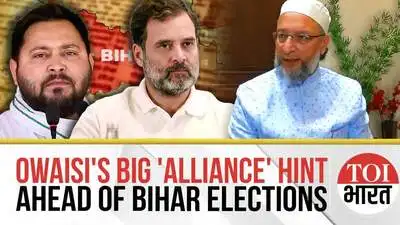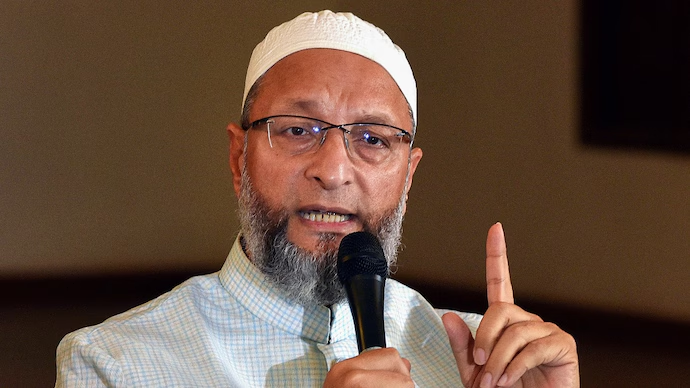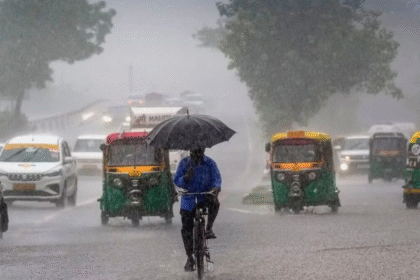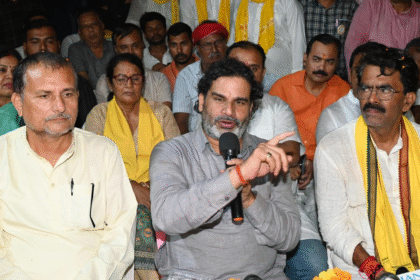Unveiling the Storm — Owaisi’s Accusation and the Electoral Crossroads in Bihar
A Flashpoint in Electoral Politics
In the furnace of India’s politically vibrant landscape, few regions command as much attention during an election season as Bihar. With its complex matrix of caste identities, religious dynamics, and political legacies, Bihar stands as a decisive theater where national ambitions and regional aspirations collide. The recent explosive remarks by All India Majlis-e-Ittehad-ul-Muslimeen (AIMIM) chief Asaduddin Owaisi, targeting the Election Commission (EC) over a large-scale voter list overhaul, have now added fresh fuel to this politically charged environment.
Owaisi’s allegation — that the voter list cleanup disproportionately impacts Muslim voters and was influenced by Rashtriya Janata Dal (RJD) interests — has generated sharp responses, debates on voter suppression, and scrutiny over EC’s neutrality. The situation offers a window into deeper systemic questions: How impartial is India’s electoral machinery? Can minority voter rights be safeguarded in regions where demographic anxiety merges with partisan goals?
This part of the article begins with tracing the timeline of events, Owaisi’s statements, and early political reactions across Bihar’s polarized political stage.
The Trigger: What Did the Election Commission Do?
The Election Commission, ahead of the 2025 Bihar Assembly elections, initiated what it described as a “routine and technical voter list revision” — a standard electoral exercise that includes deletion of duplicate, shifted, or deceased voters and the addition of new ones. However, this cycle of the revision reportedly led to over 8 lakh deletions in several Muslim-dominated districts such as Seemanchal, Purnea, Kishanganj, and Araria.
The EC maintained that its actions were backed by verification processes and local-level administrative inputs. However, inconsistencies emerged:
- Families reported that multiple eligible voters were removed without notice.
- Community representatives highlighted missing names during early voter registration drives.
- Grassroots mobilizers accused local RJD workers of selectively flagging Muslim households as “inactive” voters.
This created fertile ground for Owaisi to launch his political offensive.
Owaisi’s Accusation: Conspiracy or Calculated Rhetoric?
Addressing a press conference in Patna, Owaisi lashed out:
“This is not just deletion — this is disenfranchisement. The Election Commission is not blind, and neither are we. This voter list cleanup is a political operation with a communal target. The hands may be administrative, but the mind behind it is political — and RJD is complicit.”
Owaisi went further, claiming:
- RJD, which has a stronghold over the state machinery through bureaucratic networks, has influenced the voter verification process.
- The aim is to undermine AIMIM’s growing foothold in Seemanchal and other Muslim-majority constituencies.
- This voter list manipulation is meant to suppress young Muslim voters who form the rising core of AIMIM’s electoral base.
These allegations, though yet to be legally substantiated, touched raw nerves across Bihar’s political divide.
A Deeper Battle: AIMIM’s Rise in Bihar
To understand the tension, one must trace AIMIM’s steady political climb in Bihar since the 2020 Assembly polls. Traditionally, Muslim votes were split between RJD-Congress alliances and, occasionally, the Janata Dal (United). However, Owaisi’s assertive minority politics, coupled with ground-level organization, has allowed his party to make inroads — especially among youth in underserved border districts.
In 2020, AIMIM won 5 seats in the Seemanchal belt — a strong signal of its emergence. Though defections later hit the party, it cemented Owaisi’s role as a new minority voice independent of secular-communal binaries.
By 2025, surveys suggested that AIMIM had the potential to influence at least 30–40 constituencies, particularly in seats with 15–30% Muslim population. This posed a direct threat to RJD, which has historically considered this demographic its loyal base.
Thus, Owaisi’s claims are not just rhetorical ammunition — they reflect the turf war for the minority vote in Bihar.
RJD’s Response: Silence, Denial, and Strategic Discomfort
The RJD, under Tejashwi Yadav’s leadership, has not issued a strong rebuttal to Owaisi’s claims. The party dismissed the accusations as “baseless and diversionary”, instead urging the EC to issue a formal clarification. This ambivalence has fueled speculation.
Several observers interpret this silence as a sign of:
- Internal disagreement within RJD over how to deal with AIMIM’s challenge.
- A fear that direct engagement with Owaisi may escalate the issue, giving him further political mileage.
- Quiet acknowledgment that local-level operatives may have engaged in tactics to tilt the playing field.
Regardless, RJD’s positioning seems awkward: it doesn’t want to alienate its Muslim base, but nor does it want to validate Owaisi’s challenge.

The EC’s Credibility Under Scrutiny
The most troubling aspect of this episode is the spotlight it places on the Election Commission’s credibility. A supposedly neutral institution is now accused — even if informally — of being swayed by regional power games.
Legal experts and former election commissioners have urged:
- Immediate independent audit of the voter list deletions in sensitive districts.
- Public release of deletion and addition statistics broken by ward, caste, and religion — though constitutionally controversial, this would settle doubts.
- Third-party supervision of all further revisions.
Civil society bodies and citizen journalist groups like Lokniti-CSDS and Association for Democratic Reforms (ADR) have flagged the need for greater transparency.
If unresolved, these accusations could sow mistrust ahead of elections, especially among first-time voters.
Opposition Reactions: Congress, JD(U), and BJP Speak
- The Congress, though aligned with RJD, has called for clarity from EC, signaling its discomfort with the voter deletion narrative.
- JD(U), led by Nitish Kumar, termed Owaisi’s remarks as “drama politics,” suggesting AIMIM was trying to stir communal fear for electoral benefit.
- Interestingly, the BJP, usually the target of Owaisi’s tirades, has remained relatively silent, leading to speculation that it may benefit from the Muslim vote fragmentation.
This triangulated silence — from RJD, JD(U), and BJP — places AIMIM in the center of national conversation, a position Owaisi has always relished.
Demographics, Strategy, and the Rising Muslim Youth Vote in Bihar
The Seemanchal Pivot: Ground Zero of Bihar’s Muslim Politics
The Seemanchal region—comprising districts like Kishanganj, Araria, Purnea, and Katihar—has become the political crucible of Muslim representation in Bihar. These districts collectively hold more than 45% Muslim population, creating a concentrated bloc unlike anywhere else in India except parts of Kerala and West Bengal. This demographic concentration, paired with underdevelopment and lack of infrastructure, has made it fertile ground for grassroots mobilization.
For decades, Seemanchal remained neglected in development schemes, often spoken about in political manifestos but rarely prioritized in action. The RJD and Congress, which once held sway here, offered symbolic representation without real developmental dividends. Into this vacuum stepped AIMIM, focusing on issues of education, healthcare, infrastructure, and job creation, with a clear communal advocacy tone.
Owaisi’s political gamble in Seemanchal was to showcase AIMIM as a party that not only talks about Muslim pride but also delivers on promises. His strategy: use young, local leaders who speak the language of the streets, not just that of Parliament.
Voter Deletion in Seemanchal: A Pattern or Coincidence?
Post-2024, AIMIM began conducting its own survey of electoral roll anomalies, especially in minority-dominant wards. According to preliminary figures released by the party:
- In Kishanganj, nearly 1.1 lakh voters were removed between September 2024 and February 2025.
- In Araria, deletion numbers crossed 80,000, many of them under the label “shifted residence” or “duplicate registration.”
- Households where all members were removed without due notice raised concerns over procedural lapses.
This perceived pattern of voter deletion—not witnessed at such scale in Hindu-dominated regions of Bihar—strengthened Owaisi’s allegation of targeted disenfranchisement.
While the EC continues to maintain that the cleanup is standard procedure, independent civil society watchdogs like Election Watch Bihar and ADR have noted that:
- Field verification was inconsistently applied.
- Booth-level officers often acted on inputs from local political party workers.
- In many cases, Muslim families were never notified or given a chance to contest deletions.
The Mobilization of Youth: AIMIM’s Ground Troops
What sets AIMIM apart in 2025 is not just its leadership but its cadre base, especially among young Muslim men and women under 30. These digital-first voters are:
- Deeply aware of their socio-political rights.
- Disillusioned with promises of the RJD-Congress combine.
- Hungry for representation that is both assertive and modern.
AIMIM’s outreach campaigns involve WhatsApp voter groups, AI-based registration checks, and youth-targeted manifesto drives. One of their most viral tools is a mobile app that alerts users if their name has been deleted from the voter list based on public EC data.
This marriage of tech and activism has made AIMIM look less like an outsider and more like an emerging mainstream force in Bihar.
The Politics of Polarization: Who Benefits from a Divided Vote?
As AIMIM’s influence grows, the political math becomes murkier. A fractured Muslim vote weakens RJD’s seat count and indirectly benefits BJP, which holds a near-monopoly on upper-caste Hindu votes in most urban and semi-urban areas. In effect, AIMIM’s rise is a double-edged sword:
- It empowers Muslim voices through new representation.
- But it also weakens secular coalition arithmetic, especially in closely contested constituencies.
This complex dynamic is why some critics allege AIMIM is a “vote-cutter”, a charge Owaisi strongly denies, asserting:
“Do you call the BJP a vote-cutter when it fields upper-caste candidates? Why is a Muslim party a threat when it competes in elections? Are we not citizens too?”
This rhetorical counterattack not only defends AIMIM’s right to compete but also positions it as an antidote to tokenism.
The EC’s Next Steps: Transparency or Turbulence?
In response to growing noise, the Election Commission has:
- Ordered an internal review of voter deletion in 6 districts.
- Promised more rigorous re-verification drives before the final roll is frozen.
- Opened helpline numbers and grievance redressal centers in 21 constituencies.
However, whether these steps are enough to restore public faith remains uncertain. Owaisi’s legal team is also reportedly preparing to file a PIL in the Patna High Court, demanding:
- Immediate reinstatement of deleted voters pending physical verification.
- Public access to ward-wise deletion and addition data.
- Neutral oversight of EC’s revision process.
As Bihar inches closer to the 2025 assembly elections, political parties across the spectrum are sharpening their arsenals, redrawing alliances, and recalibrating their vote strategies. Unlike previous years where the dominant narrative revolved around Lalu vs. Nitish or secularism vs. communalism, 2025 brings a third axis of disruption—the assertive Muslim electorate.
- The RJD-led Mahagathbandhan (Grand Alliance) remains committed to a broad secular platform but faces credibility questions among minority voters.
- The BJP-JD(U) alliance, though electorally potent, is dealing with internal contradictions—especially over Nitish Kumar’s dwindling influence and BJP’s overtly Hindutva push.
- AIMIM, meanwhile, refuses to toe anyone’s line, vowing to go it alone in key seats across Seemanchal, Patna, and Bhojpur belts.
This makes 2025 not just a battle of ideologies but one of identity consolidation, caste arithmetic, and narrative ownership.
Muslim Consolidation vs. Political Fragmentation
A paradox defines Bihar’s Muslim politics in 2025. On the one hand, there’s a growing push for community consolidation under a confident, unambiguous leadership like that of Owaisi. On the other, fragmentation is visible due to:
- Competing claims from RJD’s Tejashwi Yadav, who argues his party gave Muslims the most MLAs in 2020.
- Independent Muslim candidates in urban centers like Patna, Gaya, Bhagalpur who reject both RJD and AIMIM.
- The rise of Pasmanda Muslim voices, especially among backward castes like Ansaris and Qureshis, seeking distinct representation from Ashraf-dominated narratives.
This internal churn may redefine the very grammar of Muslim politics, turning it from monolithic support to pluralistic assertion.
BJP’s Silent Strategy: Divide and Win
While Owaisi and Tejashwi battle for the Muslim vote, the BJP appears to be playing a long game. Senior party functionaries have been discreetly activating:
- Booth-level Sampark Abhiyaans in areas with mixed demographics.
- Development-based messaging around Modi’s welfare schemes like PM Awas Yojana, Ayushman Bharat, and Ujjwala, targeting economically backward Muslims.
- Caste-based sub-fragmentation among Pasmanda Muslims to dilute the Seemanchal bloc effect.
In short, BJP is not aggressively wooing the Muslim vote but strategically chipping away at its cohesion, banking on a divided minority vote to boost majoritarian consolidation.
The Curious Case of Congress: Caught in the Middle
The Congress party, once the default choice of Muslims in Bihar, now finds itself adrift, caught between its alliance with RJD and its inability to project any real leadership or agenda in Bihar. With only 3 MLAs in the current assembly, Congress risks becoming irrelevant unless it:
- Projects a strong Muslim face from Bihar who is not tokenistic.
- Reclaims legacy credibility by owning up to past failures and proposing actionable reform.
- Stops piggybacking entirely on RJD and builds grassroots presence.
Owaisi has capitalized on Congress’ inertia by presenting AIMIM as a modern alternative to secularism sans subservience.
Social Media Wars: Narrative Building in the Digital Era
2025 is perhaps Bihar’s first truly digital election. From Instagram reels to Telegram groups and Twitter threads, political messaging has exploded online.
- AIMIM uses data visualization and short videos to explain EC anomalies in voter lists.
- BJP runs micro-targeted WhatsApp campaigns debunking Owaisi as a “vote-splitter.”
- RJD focuses on Tejashwi’s youth connect, showcasing his visits to madrassas and minority schools.
Digital war rooms are becoming as important as real campaign rallies. The battle for perception now begins long before the EVM button is pressed.
The Role of Regional Media: Amplifier or Gatekeeper?
Regional news channels and Urdu press play a crucial role in Bihar’s elections. But there’s rising concern about:
- Selective reporting on issues of minority suppression.
- Growing dominance of corporate-owned newsrooms aligned with national parties.
- Manipulation of narratives around Owaisi’s speeches to portray them as radical or divisive.
AIMIM has countered this with its own YouTube news bulletins, X (Twitter) spaces, and real-time fact-checks to create parallel news ecosystems.
Poll Arithmetic: What Do the Numbers Say?
Let’s break down some numbers heading into the elections:
- Total assembly seats: 243
- Muslim-majority influence: 110+ constituencies
- AIMIM is expected to contest at least 60 seats
- RJD-Congress-Left alliance: Contesting 210+ with seat-sharing still under negotiation
- BJP-JD(U): Targeting 220+ with a well-funded campaign and booth-level management
If AIMIM manages to win even 10–15 seats, it could become a kingmaker in a hung assembly or deny RJD the critical mass to form government.
Electoral History and Strategic Learnings
Historically, Bihar’s Muslim electorate has voted tactically:
- In 2010 and 2015, they backed Grand Alliance candidates to defeat BJP.
- In 2020, AIMIM shocked everyone by winning 5 seats in Seemanchal, disrupting the secular vote-bank consensus.
The takeaway: Muslims in Bihar no longer vote monolithically. And with AIMIM gaining momentum in urban Muslim pockets and RJD holding sway in rural belts, tactical voting may give way to ideological assertion.
Also Read : Top 5 Shocking Moments as MNS Leader’s Son Filmed Confronting Woman Over Marathi in Mumbai








